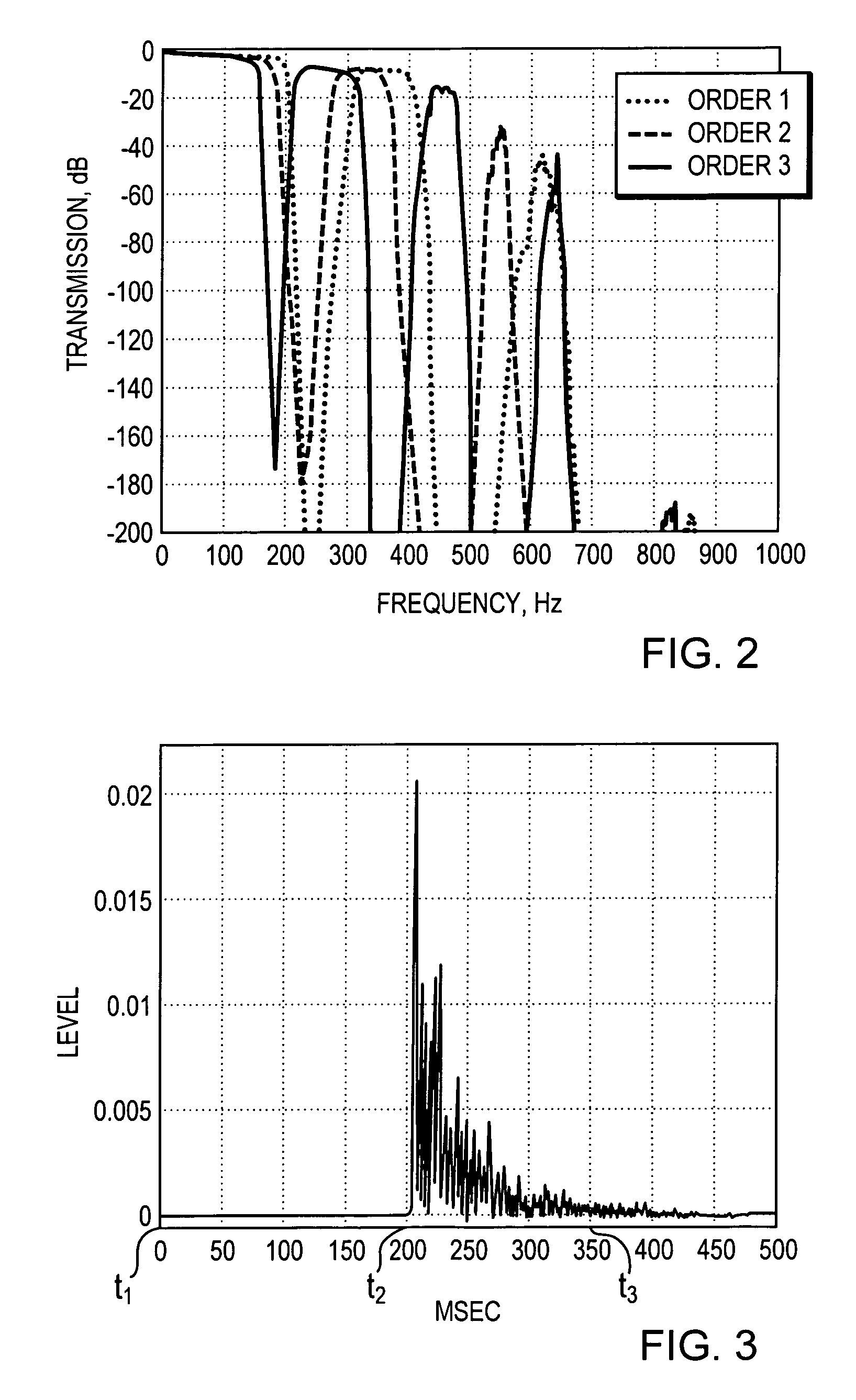Methods and systems for communicating data through a pipe
a technology of acoustic telemetry and data transmission, which is applied in the field of data communication, can solve the problems of limited applicability of drill string, low data transmission rate, and high temperature, and achieve the effect of improving the effective rate of data transmission and the range of acoustic telemetry system
- Summary
- Abstract
- Description
- Claims
- Application Information
AI Technical Summary
Benefits of technology
Problems solved by technology
Method used
Image
Examples
Embodiment Construction
[0035]In broad overview, the present invention counteracts the effects of time-spreading and reduces the likelihood that data is lost or corrupted because an acoustic signal is transmitted through a drill string at a frequency corresponding to a null in the frequency domain. For example, in various embodiments, the present invention employs broadband, as opposed to narrowband, communication techniques, desirably with redundancy, to acoustically transmit data through a drill string or pipe. More specifically, in some embodiments of the invention, a plurality of acoustic signals, some of which contain the same (i.e., redundant) information, or portions of information, as other acoustic signals, are transmitted through the drill string or pipe substantially simultaneously at different frequencies spanning multiple regions of a frequency response for the drill string or pipe. In such a fashion, the likelihood of receiving complete, and correct, data at the opposite end of the drill stri...
PUM
 Login to View More
Login to View More Abstract
Description
Claims
Application Information
 Login to View More
Login to View More - R&D
- Intellectual Property
- Life Sciences
- Materials
- Tech Scout
- Unparalleled Data Quality
- Higher Quality Content
- 60% Fewer Hallucinations
Browse by: Latest US Patents, China's latest patents, Technical Efficacy Thesaurus, Application Domain, Technology Topic, Popular Technical Reports.
© 2025 PatSnap. All rights reserved.Legal|Privacy policy|Modern Slavery Act Transparency Statement|Sitemap|About US| Contact US: help@patsnap.com



